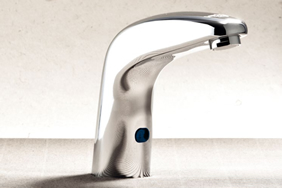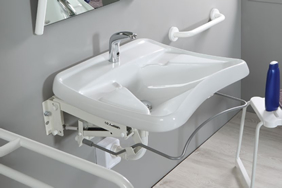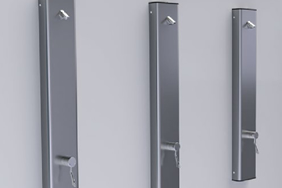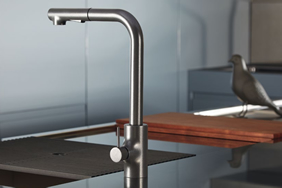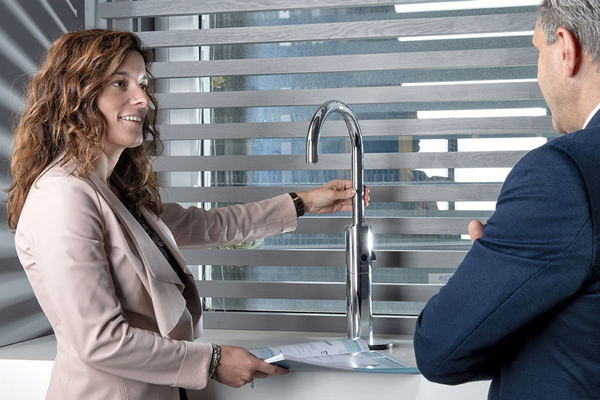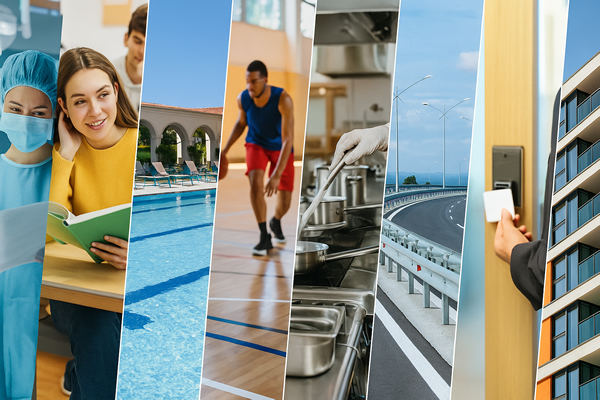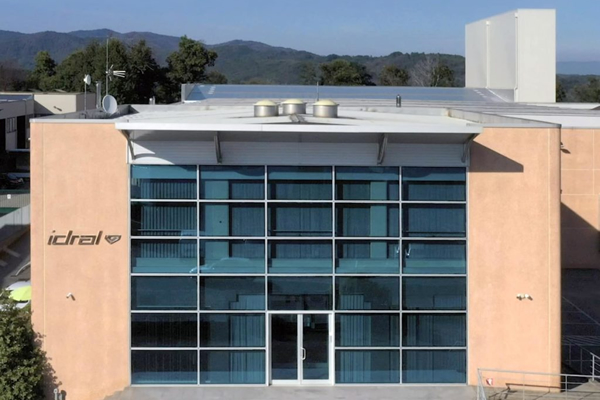
The electronic tap was not born yesterday, but for a long time it remained exclusive to public places. It is almost superfluous to explain what it is, because after all we all know it: the electronic tap is the one that does not have a mechanical lever and automatically activates the water supply when a sensor detects the presence of hands within the area affected by the supply. Restaurants, hotels, gyms, airports: there is no public place that does not make use of this technology to achieve the right mix of consumption containment, safety and hygiene. To all this we must then add the topical factor: washing your hands without touching any object helps to reduce the transmission of any contagion, which is why it is - for those who are still thinking about it - a step to be taken quickly.

Electronic taps have no contraindications of any kind and have become extremely easy to install and cost-effective in terms of longevity and energy savings. Why then have they not yet become standard in private homes? Probably because of a culture that is slow to evolve. Despite the fact that today we live surrounded by high-tech devices, in this area it seems that the simple transition from mechanical to electronic devices is more difficult than elsewhere. The electronic faucet is no more complicated to install than a classic faucet, nor does it hide any problems in terms of programming or management. In short, it is something that is not a nuisance and only has benefits in the long run.
Electronic faucet myths, from installation to safety
One of the myths to dispel about the electronic tap is the complexity of installation. In a traditional faucet, all it takes is to connect two hoses and install the drain, which a good installer can do in just over 10 minutes. In an electronic faucet, the operation is the same: simply, the hoses are not connected to the wall but to the electronic motor that contains the battery pack. The end.
There remains the 'non-problem' of the settings, which are of course already programmed at the factory. At what distance between the sensor and your hands does the tap start the water supply? With what intensity? After how long does the water supply stop? What happens if the sensor is dirty? The electronics provide precise answers to each of these questions without the installer or end user having to do anything: certainly, in case of special needs, the original settings can be revised and fine-tuned, but this does not mean burdening the installation process or the subsequent management of the tap.
It is all a matter of culture, we said. In the 2020s, some people still tend to trust a mechanical system more than an electronic one, forgetting - for example - how vital electronics are in cars today, and so we trust them with our safety without batting an eyelid. But what might be the fears surrounding an electronic tap? Some people wonder how to stop the water supply in case the sensor gets dirty or there is a malfunction of some other kind, not knowing that the supply stops anyway after the pre-set time to avoid wastage or flooding. Others fear that a blackout, unlike mechanical systems, may inhibit the use of the tap, but they do not know that the tap is equipped with a battery power supply capable of guaranteeing up to 220,000 operations (years and years), of warning when close to discharge, and of locking the tap in a 'closed' state once the charge is exhausted, so as to avoid all kinds of consequences.
The (real) benefits of the electronic tap, from savings to hygiene
The fears are unfounded, the benefits real and tangible. The first is certainly the water saving, which not only has a positive impact on consumption but also on environmental sustainability and the preservation of resources: the electronic tap consumes only the water that is needed, reducing the time it takes to dispense it. In a domestic context, this makes a lot of sense, as it is quite common to keep the water running when drying one's hands or for dozens of seconds while brushing one's teeth: with an electronic system, there is less waste. Both costs and the planet are thankful.
Other advantages of electronic taps? Safety, certainly: just think of the fact that an electronic faucet cannot be left running, and therefore - quite simply - cannot cause flooding, even when used carelessly. The tap will in any case interrupt the supply even if the sensor should fail, the batteries of the power supply run out, or any other occasion of malfunction. If it is an electronic thermostatic tap, it is also possible to set the desired water temperature for an additional dose of well-being.

Finally, the hygienic aspects. The electronic tap has the particularity that it does not have to be touched in order to function, and consequently is perfect in all those environments (above all, public) in which the transmission of viruses and bacteria is facilitated by the high concentration of people. In this respect, the risk is clearly lower at home, but in times like the present, such a system can still be a panacea.
And then there is the whole question of legionella, a bacterium that develops in stagnant water and can cause serious health consequences. There is only one preventive measure: prevent water from stagnating in the pipes for a long time, which is achieved by ensuring that the water itself is constantly recirculated and fresh. Unfortunately, this is not always feasible, especially in environments where people only stay on weekends or holidays, but this is where the importance of the electronic tap comes to the fore: it is equipped with a flushing system that automatically circulates the water every 24 hours when the system is not in use for a long time, ensuring the necessary freshness.
If you have any questions about this, please contact us.





